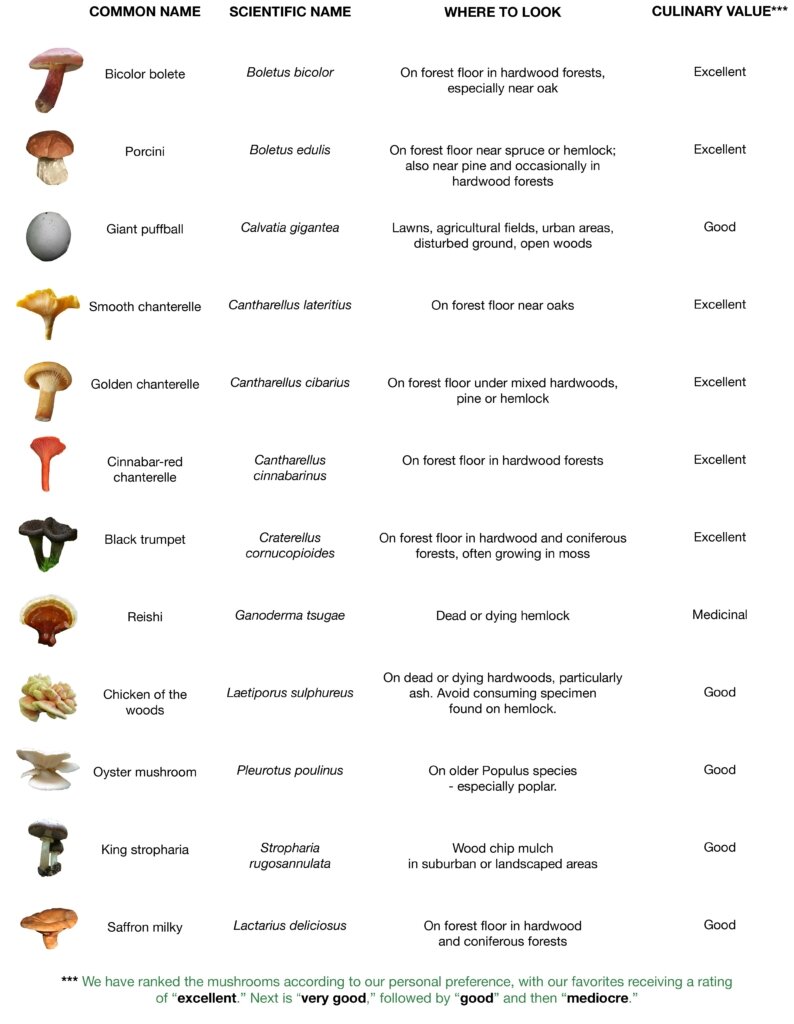Chanterelles, Boletes and their Brethren
It rains as I write, a good slow and steady soak that is sure to summon great flushes of gourmet and medicinal fungi. After a dry start to the summer season, golden chanterelles and boletes – from painted to porcini – are poking their familiar faces up from the warm July soil.
Boletes and chanterelles can be divine, but these charismatic fungi should not be mistaken for beginner species.
The jack-o’-lantern is a common, highly poisonous mushroom that is all-too-easily confused for the supremely edible (once cooked) chanterelle. Though not deadly for healthy adults, a jack-o’-lantern dinner is likely to leave you clinging to the toilet bowl for well over 24 hours. The differences between jacks and chanterelles are obvious to experienced foragers, but can be indiscernible to beginners. Once you can have mastered recognition of the golden chanterelle’s attached, forking gills and scattered fruiting habit, you can enjoy a handful of equally delicious, vibrantly colored chanterelle relations as well.
Boletes, pored fungi that grow in mycorrhizal association with plants, are generally safer than gilled mushrooms. No North American boletes are recognized as deadly, but this can lend beginners a false sense of security. Boletes are fairly simple to ID to genus, but identifying to species can vary from straightforward to extremely difficult without microscope and spore print. There are myriad North American boletes known to be edible, a handful of which rank among the most exquisite and savory of all wild mushrooms (such as the Boletus edulis group). There also are “edible” (ie non-poisonous) boletes that are repulsively bitter, and mild-flavored boletes that are highly toxic. Be weary of any blanket rules – you have to know each mushroom, in all its nuance and wild glory.
I had an inspiring morel season, but the June mushrooming dry spell has left me craving the persistence, passion, and abundance of the peak season mushroom hunt. We have not seen peak yet, but I anticipate promising conditions and invigorating surprises for our guided forays this coming weekend!
ForageCast for the next two weeks

